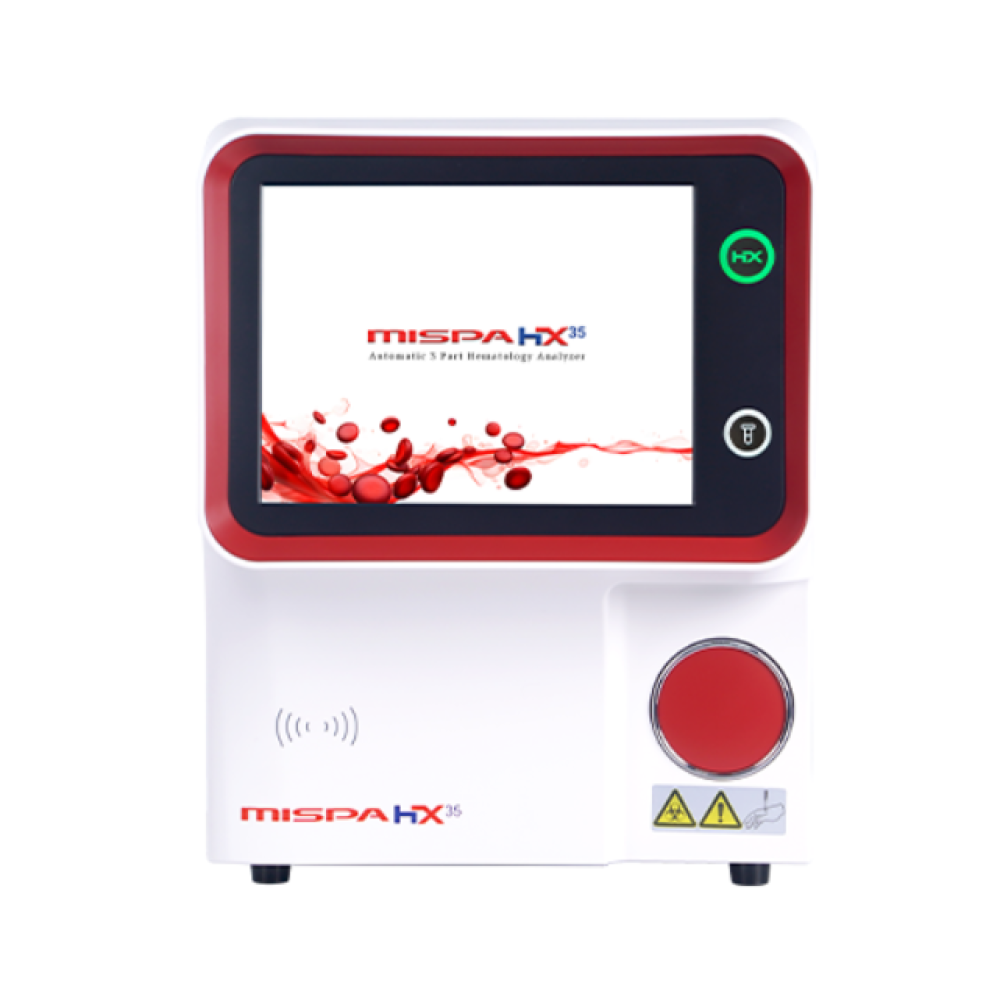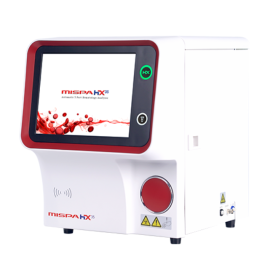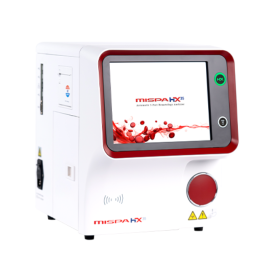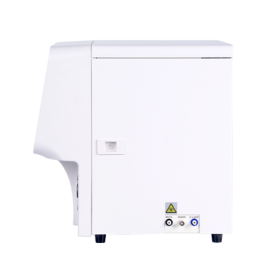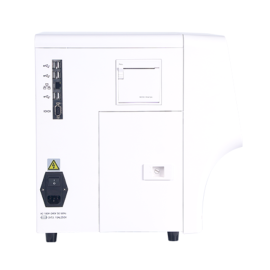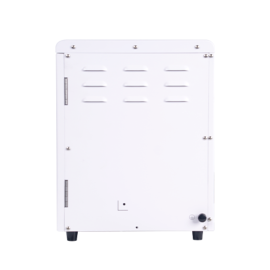Agappe Mispa HX35 Automatic 3 Part Differential Hematology Analyzer
- Consumables & Disposables
- Critical Care & ICU Equipment
- Dental Equipment & Instruments
- Derma Products
- Diagnostics & Lab Equipment
- Home Care & Rehabilitation
- Hospital Furniture
- Operation Theatre (OT) Equipment
- Orthopedic & Prosthetics
- Others
- Pharma & Wellness
- Surgical Instruments
- Veterinary & Niche Medical Equipment
Your shopping cart is empty!
Product Description
The Agappe Mispa HX35 is a compact, entry-level, fully automated hematology analyzer designed for small clinics, doctor's offices, and low-volume laboratories. It provides a complete blood count (CBC) with a 3-part WBC differential,
offering a balance of essential functionality, ease of use, and affordability.
Key Specifications at a Glance
|
Feature |
Specification |
|
Analyte Parameters |
22 Parameters including a 3-Part WBC Differential |
|
Throughput |
Up to 40 Tests / Hour |
|
Sample Type |
Whole Blood (Open Vial & Pre-Diluted Mode) |
|
Sample Volume |
20 µL (Open Vial) |
|
WBC Differential |
Lymphocytes, Granulocytes, Mid Cells (Monocytes, Eosinophils, Basophils) |
|
Technology |
Electrical Impedance (Coulter Principle) for Cell Counting, Colorimetric for HGB |
|
Sample Mode |
Semi-Automatic (Operator loads sample cup for each test) |
|
Data Management |
Internal Storage for 10,000 patient reports with histograms |
|
Interface |
USB, RS-232, Optional Printer |
|
Display |
Color LCD Screen |
Detailed Technical Specifications
1. Reported Parameters (22)
- RBC Count
- WBC Count
- Hemoglobin (HGB)
- Hematocrit (HCT)
- MCV (Mean Corpuscular Volume)
- MCH (Mean Corpuscular Hemoglobin)
- MCHC (Mean Corpuscular Hemoglobin Concentration)
- Platelet Count (PLT)
- RDW (Red Cell Distribution Width)
- MPV (Mean Platelet Volume)
- PDW (Platelet Distribution Width)
- PCT (Plateletcrit)
- 3-Part WBC Differential:
- LYM% and LYM# (Lymphocytes)
- GRA% and GRA# (Granulocytes - Neutrophils)
- MID% and MID# (Mid Cells - a combined count of Monocytes, Eosinophils, and Basophils)
2. Performance & Methodologies
- Counting Technology: Electrical Impedance (Coulter Principle) for RBC, WBC, and PLT.
- Hemoglobin Method: Colorimetric (Sodium Lauryl Sulphate - SLS-free method).
- WBC Differential: 3-part differential based on cell size using impedance.
- Calibration: Manual calibration with calibrators.
- Quality Control: Compatible with commercial QC materials; built-in QC tracking.
3. Sample Handling
- Sample Modes:
- Whole Blood Mode (Open Vial): 20 µL of EDTA-anticoagulated whole blood is aspirated from a sample cup. This is the primary mode of operation.
- Pre-Dilution Mode: For very low sample volumes, manual pre-dilution is performed.
- Operation: The operator must manually present each sample cup to the aspiration probe. It does not have an autoloader.
4. Throughput & Operational
- Speed: Approx. 40 samples per hour.
- Start-up Time: Ready within 2-3 minutes.
- Warm-up Time: Not required.
5. Data Management & Connectivity
- Internal Memory: Stores up to 10,000 patient records with results and WBC/RBC/PLT histograms.
- Data Output: Results and histograms for WBC, RBC, and PLT.
- Interfaces:
- USB Port (for data export to a flash drive)
- RS-232 Port (for connection to an external computer or printer)
- Printer: Supports connection to an optional thermal printer.
6. Reagents & Consumables
- Reagents Used:
- Diluent
- Lyse
- Cleaner
- Consumables: Sample cups, printer paper.
7. Physical Specifications
- Dimensions: Compact, approximately (W x D x H) 350 x 400 x 350 mm.
- Weight: ~18 kg.
- Power Supply: 110-240 V AC, 50/60 Hz.
- Operating Conditions: Temperature 15°C - 35°C; Humidity <80%.
Key Features & Benefits
- Compact and Affordable: Ideal for settings with budget and space constraints.
- Fully Automated Operation: Once the sample cup is presented, the analyzer automatically aspirates, analyses, and prints results, requiring minimal technical skill.
- 3-Part Differential: Provides more information than a basic CBC (without diff), helping in the initial screening of infections and other conditions.
- Low Sample Volume: Requires only 20µL of blood, perfect for pediatric and geriatric patients.
- User-Friendly Interface: The simple menu and color screen make operation straightforward.
- Excellent Data Storage: Ample storage for 10,000 results is significant for a unit in this class

